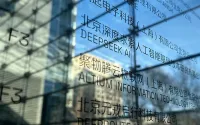8 January 2006David Rose
They routinely experience bleeding and nausea, according to a sworn statement by the camp's chief doctor, seen by The Observer.
'Experience teaches us' that such symptoms must be expected 'whenever nasogastric tubes are used,' says the affidavit of Captain John S Edmondson, commander of Guantánamo's hospital. The procedure - now standard practice at Guantánamo - 'requires that a foreign body be inserted into the body and, ideally, remain in it.' But staff always use a lubricant, and 'a nasogastric tube is never inserted and moved up and down. It is inserted down into the stomach slowly and directly, and it would be impossible to insert the wrong end of the tube.' Medical personnel do not insert nasogastric tubes in a manner 'intentionally designed to inflict pain.'
It is painful, Edmonson admits. Although 'non-narcotic pain relievers such as ibuprofen are usually sufficient, sometimes stronger drugs,' including opiates such as morphine, have had to be administered.
Thick, 4.8mm diameter tubes tried previously to allow quicker feeding, so permitting guards to keep prisoners in their cells for more hours each day, have been abandoned, the affidavit says. The new 3mm tubes are 'soft and flexible'.
The London solicitors Allen and Overy, who represent some of the hunger strikers, have lodged a court action to be heard next week in California, where Edmondson is registered to practise. They are asking for an order that the state medical ethics board investigate him for 'unprofessional conduct' for agreeing to the force-feeding.
Edmonson's affidavit, in response to a lawsuit on behalf of detainees on hunger strike since last August, was obtained last week by The Observer, as a Guantánamo spokesman confirmed that the number of hunger strikers has almost doubled since Christmas, to 81 of the 550 detainees. Many have been held since the camp opened four years ago this month, although they not been charged with any crime, nor been allowed to see any evidence justifying their detention.
This and other Guantánamo lawsuits now face extinction. Last week, President Bush signed into law a measure removing detainees' right to file habeas corpus petitions in the US federal courts. On Friday, the administration asked the Supreme Court to make this retroactive, so nullifying about 220 cases in which prisoners have contested the basis of their detention and the legality of pending trials by military commission.
Although some prisoners have had to be tied down while being force-fed, 'only one patient' has had to be immobilised with a six-point restraint, and 'only one' passed out. 'In less than 10 cases have trained medical personnel had to use four-point restraint in order to achieve insertion.' Edmondson claims the actual feeding is voluntary. During Ramadan, tube-feeding takes place before dawn.
Article 5 of the 1975 World Medical Association Tokyo Declaration, which US doctors are legally bound to observe through their membership of the American Medical Association, states that doctors must not undertake force-feeding under any circumstances. Dr David Nicholl, a consultant neurologist at Queen Elizabeth's hospital in Birmingham, is co-ordinating opposition to the Guantánamo doctors' actions from the international medical community. 'If I were to do what Edmondson describes in his statement, I would be referred to the General Medical Council and charged with assault,' he said.
· Yesterday the new German Chancellor Angela Merkel became the latest leader to condemn the United States for practices at the prison. In a magazine interview days before her first visit as premier to the US, Merkel said Washington should close Guantánamo and find other ways of dealing with terror suspects.
http://observer.guardian.co.uk/world/story/0,16937,1681736,00.html






